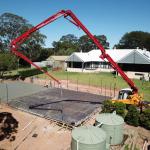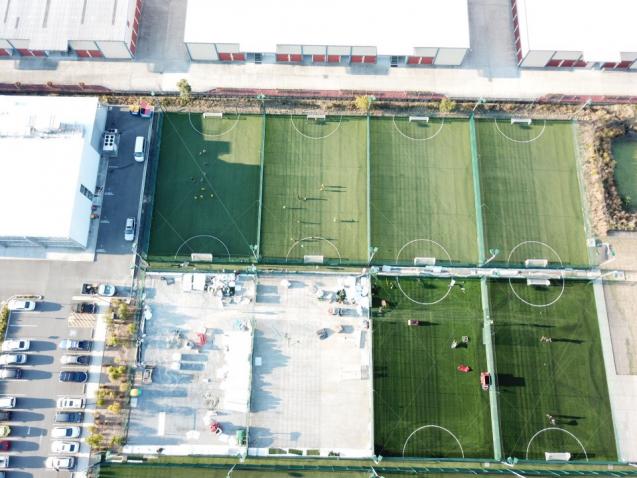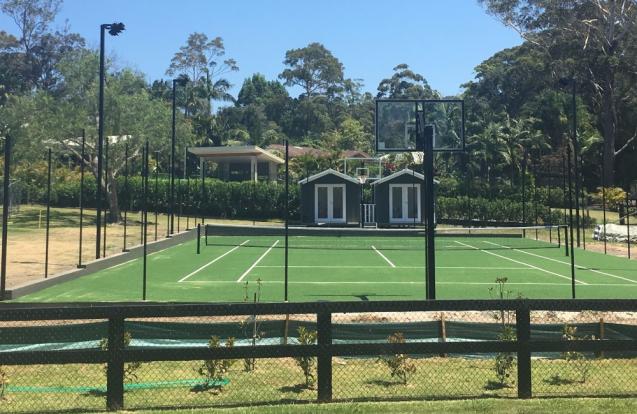
Cost of Installing a Tennis Court
By Sportszone Group|July 16, 2018
A tennis court is a valuable asset to have. Not just because tennis is a great sport, it is also a sure way to build and maintain a healthy lifestyle. What's more, it is an exceptional investment in property. But what does it cost to install a tennis court? A number of factors need to be considered.
Adequate Space
The cost of acquiring a suitable space for the court is important to consider. A standard tennis court should be about 24 metres in length and 11 metres wide. There should also be adequate space to accommodate a perimeter fence and additional room around the court. Ideally, the available space should be about 33.5 metres in length and 16.2 metres in breadth, but the acceptable minimum would be at least 30 metres x 15 metres.
It is also important to consider the orientation of the space. On a good tennis court, players should not be made to face the sun directly, as glare interferes with performance during the match. To minimise this effect, experts recommend a true north-south orientation for a tennis court. While this may not completely eliminate the problem at all times of the year, especially in a country like Australia, it will at least mitigate its adverse effects.
Material for the Playing Surface
The material to be used for the playing surface is an important cost consideration. The cheapest material for a tennis court playing surface is clay. The red-coloured clay courts are composed of crushed brick, shale or stone. They are better at shock absorption and they make for slow game play because the balls bounce higher, so the games appear more interesting to watch. They, however, require a lot of maintenance, which includes brushing, watering and rolling.
Hard courts are made of either concrete slabs or asphalt. Special treatments such as the addition of a padded layer and painting are required for best results, but they are generally easy to maintain. Their performance is more predictable than with grass and clay courts and they generally appeal to a wider range of player styles. However, they reflect a lot of heat and can be enervating for players, especially in hot climatic conditions.
Courts made of concrete are durable, and they last for a very long time, but they must be laid by experienced professionals to prevent the appearance of cracks and the eventual sinking or gradual caving in of some areas on the court. The cost of getting qualified professionals to handle the installation can make a difference between an inferior court and a high-quality tennis court. Asphalt courts are cheaper to construct, but the surface may begin to soften and wear away over time.
Grass courts are more difficult to maintain because they require regular watering and frequent mowing to keep them lush green. For this reason, private homeowners find it challenging to use them for tennis court playing surfaces. They are, however, popular on tennis courts where elite tournaments take place. Grass courts tend to be fast-paced playing surfaces.
There are varieties of synthetic courts designed for use on tennis court playing surfaces. A synthetic court can be creatively installed on a hard court for a medium soft surface. They require less maintenance than grass courts.
Additional Cost Considerations
There are other important considerations to be factored into tennis court installation costs. It is often necessary to do some preparation work such as clearing or grading of the site to render the surface properly flat. Light fittings must be installed to provide adequate lighting if nighttime play is required. Consider facilities for racket and ball storage and install rebound nets for practice. You might also want to provide a covered sitting area for spectators.
In summary, it is worth hiring qualified professionals to install your tennis court and have a well-constructed tennis court that will serve you well into the future. If you skimp on costs, you could end up with a poorly constructed court that does not add any value to your home.
Adequate Space
The cost of acquiring a suitable space for the court is important to consider. A standard tennis court should be about 24 metres in length and 11 metres wide. There should also be adequate space to accommodate a perimeter fence and additional room around the court. Ideally, the available space should be about 33.5 metres in length and 16.2 metres in breadth, but the acceptable minimum would be at least 30 metres x 15 metres.
It is also important to consider the orientation of the space. On a good tennis court, players should not be made to face the sun directly, as glare interferes with performance during the match. To minimise this effect, experts recommend a true north-south orientation for a tennis court. While this may not completely eliminate the problem at all times of the year, especially in a country like Australia, it will at least mitigate its adverse effects.
Material for the Playing Surface
The material to be used for the playing surface is an important cost consideration. The cheapest material for a tennis court playing surface is clay. The red-coloured clay courts are composed of crushed brick, shale or stone. They are better at shock absorption and they make for slow game play because the balls bounce higher, so the games appear more interesting to watch. They, however, require a lot of maintenance, which includes brushing, watering and rolling.
Hard courts are made of either concrete slabs or asphalt. Special treatments such as the addition of a padded layer and painting are required for best results, but they are generally easy to maintain. Their performance is more predictable than with grass and clay courts and they generally appeal to a wider range of player styles. However, they reflect a lot of heat and can be enervating for players, especially in hot climatic conditions.
Courts made of concrete are durable, and they last for a very long time, but they must be laid by experienced professionals to prevent the appearance of cracks and the eventual sinking or gradual caving in of some areas on the court. The cost of getting qualified professionals to handle the installation can make a difference between an inferior court and a high-quality tennis court. Asphalt courts are cheaper to construct, but the surface may begin to soften and wear away over time.
Grass courts are more difficult to maintain because they require regular watering and frequent mowing to keep them lush green. For this reason, private homeowners find it challenging to use them for tennis court playing surfaces. They are, however, popular on tennis courts where elite tournaments take place. Grass courts tend to be fast-paced playing surfaces.
There are varieties of synthetic courts designed for use on tennis court playing surfaces. A synthetic court can be creatively installed on a hard court for a medium soft surface. They require less maintenance than grass courts.
Additional Cost Considerations
There are other important considerations to be factored into tennis court installation costs. It is often necessary to do some preparation work such as clearing or grading of the site to render the surface properly flat. Light fittings must be installed to provide adequate lighting if nighttime play is required. Consider facilities for racket and ball storage and install rebound nets for practice. You might also want to provide a covered sitting area for spectators.
In summary, it is worth hiring qualified professionals to install your tennis court and have a well-constructed tennis court that will serve you well into the future. If you skimp on costs, you could end up with a poorly constructed court that does not add any value to your home.


